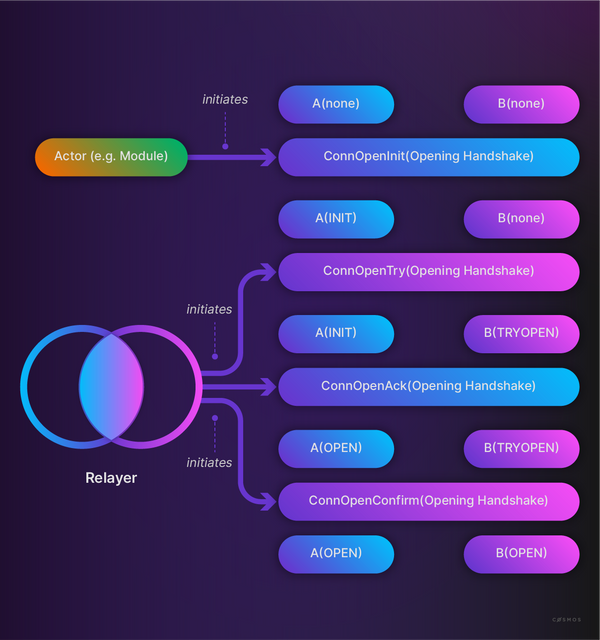IBC Relayers
Relayers read packets of data from one blockchain and communicate them to another blockchain, acting as a sort of decentralized postal service that allows two sovereign blockchains to send messages to each other. The process to enable this utilizes the Inter-Blockchain Communication (IBC) as a protocol. It allows independent blockchains to communicate with each other and exchange value, particularly tokens. IBC relayers are software programs that facilitate communication between two distinct blockchain networks that support IBC.

Relayers can also open paths across chains, creating clients, connections, and channels. The IBC protocol consists of two layers: the TAO layer and the APP layer, built on top of TAO. The TAO layer, which is primarily responsible for the functionality of IBC, allows connected blockchains to send packets of information via dedicated channels, using smart contract modules that include a light client for trustlessly verifying that the state sent by the other blockchain is valid. The APP layer enables any application-layer protocol to be built to operate on top of TAO. IBC has been enabled on 54 networks over 60 million transactions currently executed using IBC per month. Relayers are critical to the functioning of the IBC protocol. They can handle large numbers of transactions at any given time, but congestion events can still occur. Relayer infrastructure is being scaled up regularly, but in the meantime, users can support relayers by delegating their tokens to the validators that also operate IBC relayers.
Most relayers also operate validator nodes on one or more Cosmos ecosystem blockchains. The more support these relayers receive as validators, the more likely they will be encouraged to continue operating at a loss on their relayer nodes. Additionally, the knowledge that relayers are valued in such a way should encourage even more validators to set up relayer infrastructure of their own.